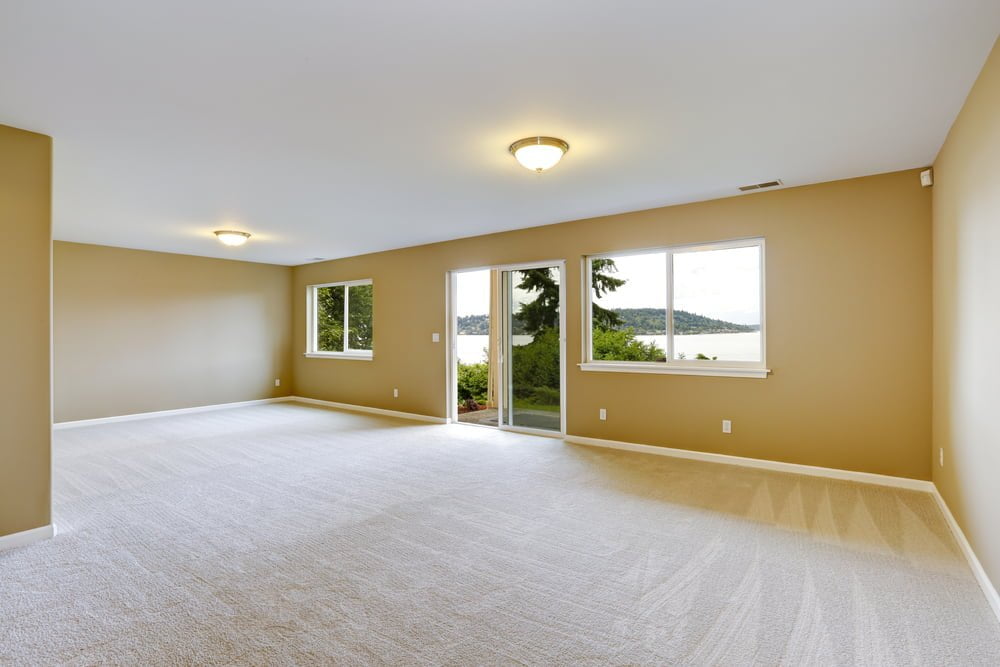Are you looking for the best variety of commercial carpet for your home, business or office premises?
Carpet or carpet flooring intended for commercial spaces is commonly referred to as commercial carpet.
These carpets are primarily constructed from materials such as Nylon, Olefin, or Polypropylene, and they are available in a wide range of colors.

Commercial carpets enhance the aesthetic appeal of your workspace, offering a beautiful flooring solution.
They are typically designed in various styles, including loop, cut pile, or carpet tiles. Each style has its own strengths and weaknesses, requiring careful consideration to determine which best suits your specific needs.
In this article, we will explore different types of carpets and discuss key factors to consider before selecting a commercial carpet for your home or office.
What Is A Commercial Carpet?
Commercial carpets are designed to withstand heavy foot traffic and are known for their durability, stain resistance, and easy maintenance.
They are typically less plush but more durable than residential carpets.
Carpet Fibers
Carpet fibers are the strands of material from which the carpet is made. They can be either natural or synthetic.
Here are some common types of carpet fibers:
Nylon
Nylon is a popular choice for inside commercial buildings, condos, and apartments. It meets fire codes since it doesn’t burn – it melts. However, it fades in the sun, so avoid outdoor use. It’s one of the most popular carpet fibers and many synthetic carpets are made of nylon.
Polyester
Polyester or “PET” is typically a lower cost than nylon, and it works in both indoor and outdoor applications. This durable fiber resists water and staining, which makes it great for any use in the home and even in commercial spaces.
Polypropylene
Polypropylene fibers are cheaper than others, but they still hold up very well in high-traffic areas. You can find polypropylene fiber in places like grocery stores or office lobbies. It resists mold and mildew, but it stains more easily than the others. It’s almost as soft as nylon.
Commercial Carpet Traffic Ratings
Some commercial carpets are designed to handle more foot traffic than others. Check out the ratings to find the best durability for you.
Commercial Carpet Traffic Ratings are used to measure the durability and performance of a carpet based on the amount of foot traffic expected in a particular area.
These ratings help you understand how well a specific carpet should perform in certain spaces.
The ratings are established through simulation wear tests and are based on a 12,000-cycle hexapod exposure conditioning test.
The resulting change in appearance is rated on a numbered scale from 1 to 5, with 5 representing no change in appearance, and 1 representing a severe change.
The higher the TARR (Texture Appearance Retention Rating), the longer the carpet will retain its original appearance.
Here are the basic categories for TARR:
- Moderate: Needs a carpet with TARR greater than or equal to 2.5
- Heavy: Needs a carpet with TARR greater than or equal to 3.0
- Severe: Needs a carpet with TARR greater than or equal to 3.5
These ratings take into account the total of the carpet and not just how the face fiber will perform, but they do not reflect any other variables such as staining, maintenance, and poor installation.
Types of Commercial Carpet
Below are different types of commercial carpet pattern styles:

Level Loop
Used in high-traffic areas, these carpets feature loops of the same width and height across the entire carpet.
The uncut weaving gives them a strong and uniform appearance, making them durable and long-lasting. Easy to clean, the looped design prevents dirt from penetrating deeply into the carpet.
Cut Pile
These types of Carpet are woven with a cut loop pattern to maintain the texture of uniformity.
They are designed in such a way that they give a feeling as if you are standing on a cushion, thereby giving a cushioned comfort and relaxation to anyone who steps on them. These types of carpets are suitable for buildings with less foot traffic as they are very soft and spongy.
Cut and Loop
This type of carpet is a combination of level and cut loop carpet. These carpets come in a variety of design and color options that you won’t get in above two carpets.
As they combine both cut and loop style, they offer a medium level of durability.
They are best for use in formal areas as they can easily hide the dirt and thus carpet looks fresh for many months. So, it reduces the effort of frequent cleaning also.
Carpet Tiles
These are essentially one-square-foot carpet tiles that interlock to form a complete carpet.
Ideal for long-term use, they allow for easy replacement of worn-out tiles without the need to replace the entire flooring.
Broadloom Carpet
These types of carpet are manufactured from large looms and mostly they are used for wall-to-wall carpeting.
They are nailed on the floor and they lack seam. Being seamless, dirt doesn’t easily penetrate them and they remain clean for a long time.
Factors To Consider Before Buying A Commercial Carpet
Below mentioned are some factors that need to be considered before choosing a commercial carpet.
Factor 1: Kind of fiber
The carpet for commercial spaces is usually made up of fibers like Nylon, Olefin, or Polypropylene.
To decide which type of carpet you need, determine the amount of footfall in your office area and also your budget.
If you are tight on budget and you face a low to moderate level of footfall in your office, then Olefin or Polypropylene carpet will be a good choice for you. It has good stain resistance capacity and stays durable in low footfall areas.
On the other hand, if you come across a high number of customer/client footfalls every day then Nylon carpet will be the best option for you as it’s more durable.
It is also stained resistant but it is more expensive than former ones. Though Nylon Carpet costs you a bit high initially but will turn out cost-effective in the longer run.
Factor 2: Set your budget
Commercial carpet is available in various price ranges. It depends on how much you want to spend.
If you go for a cost-effective carpet then you would have to change them frequently, costing you replacement charges frequently.
Otherwise, if you buy high-end carpet, they will last for a long time cutting down your replacement expenses.
So, weigh the cost of replacement against a one-time initial up-front cost and then decide which one to opt for.
Factor 3: Maintenance
Like any other product, the commercial carpet also requires proper maintenance.
So, before buying the one make sure they come with warranties and also ask the manufacturer about maintenance instructions clearly.
Conclusion
Commercial carpets are a great choice for businesses and homes due to their durability, stain resistance, and easy maintenance.
When buying a commercial carpet, consider the type of carpet, the carpet fibers, and the carpet traffic ratings to ensure you make the best choice for your needs
Choosing a carpet based on foot traffic is very important as well as a carpet’s lifespan depends on this factor to a great extent.
As you navigate the selection of commercial carpets in the future, keep these key points in mind to make an informed and suitable choice for your home or office space.
Also Read: Why Hiring a Professional Epoxy Floor Installer is Better vs Doing it Yourself
Well, what do you think about the article?
Do you like what you have read about the “The Ultimate Buying Guide to Commercial Carpet“? If so, please comment down below. We would love to hear your thoughts about this.
To see more content like this check the guide section of Money For My Beer.
My name is Zoe Sewell. I am a professional writer to share my blogs and ideas about Home improvement, Health, Business, and Fashion related helpful information to gain knowledge with other readers.

